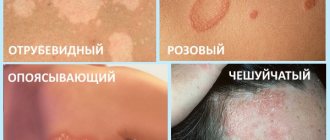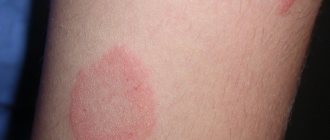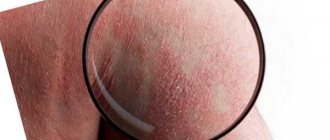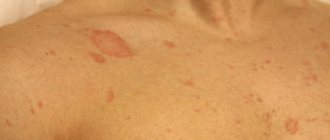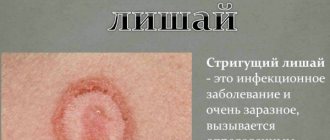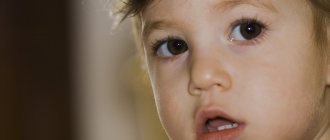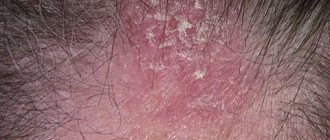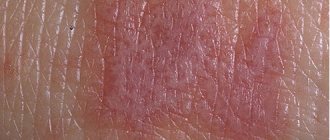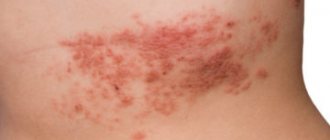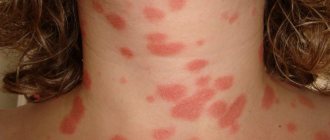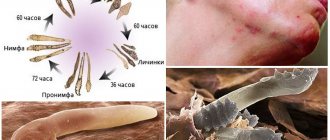Lichen squamosus or psoriasis is a severe non-contagious skin pathology of a non-infectious nature, mainly localized in the area of large joints. It cannot be completely cured. Therapy is carried out to alleviate the chronic course and eliminate the manifestations of the disease. According to statistics, 4% of the world's population suffers from the disease.
Important: the disease can progress asymptomatically for a long period of time, after which it manifests itself due to hormonal imbalance, decreased immunity, stress, and other circumstances.
Causes of the disease
Experts were able to establish a whole list of factors that give rise to the disease. Most often, it originates against the background of a combination of several causes of trouble. It is also noted that lichen planus usually occurs in individuals with thin, dry skin.
Common factors predisposing to the development of psoriasis are:
- Excessive hygiene. Frequent use of abrasive detergents and washcloths leads to disruption of the skin's natural protection and injury, which provokes various pathological reactions.
- HIV infection, AIDS. Almost 40% of people with these diseases are diagnosed with lichen planus.
- Bad habits. Addiction to alcohol and drugs, tobacco addiction disrupts nutrition and blood flow in the skin, which leads to various dermatological problems.
- Infections. Fungi and staphylococci often provoke the rapid development of scaly lichen.
- Allergy. The presence of an individual hypersensitivity reaction to certain foods predisposes to the development of lichen planus.
- Sudden climate change, poor environmental conditions, off-season and flights sometimes become a trigger for psoriasis.
- Hereditary predisposition. It is relevant if the disease is detected in a child under 10 years of age. Transmission of lichen planus is quite likely; the carriers of the disease are genes that are responsible for the synthesis of T-lymphocytes and the functioning of the immune system.
Additional factors that lead to the development of psoriasis may be frequent interaction with alcohol solutions, household chemical products, etc.
All of the above reasons lead to pathological activity of immune cells. An increase in sensitization of local defense causes serious changes in the functioning of the nervous and then the immune systems - this becomes the mechanism for the development of the disease. Under its influence, an inflammatory process is formed and skin cells begin to divide uncontrollably and quickly, several times more often than normal. As a result, a person is diagnosed with psoriasis.
What kind of disease is this?
Lichen squamosus is another name for psoriasis, and this name perfectly characterizes this disease. Psoriasis manifests itself in the formation of inflamed plaques of varying sizes on the skin, which are densely covered with thick skin scales.
Surely, almost everyone has heard about a disease such as psoriasis. And this is not surprising, since scaly lichen is quite widespread. This disease is diagnosed in 4-10% of the world's population. Moreover, statisticians who collect information about the prevalence of psoriasis claim that the number of patients is steadily growing.
Scaly lichen has been known to people since ancient times; even healers in Ancient Greece tried to treat this disease. The modern history of the study of psoriasis goes back about 150 years. But during this fairly significant period of time, researchers were able to learn not enough about the causes and treatment of psoriasis.
Widespread prevalence, uncertainty of etiology (reasons for appearance), insufficiently effective treatment - all this characterizes psoriasis as one of the most difficult problems of dermatology.
Today, dermatologists consider psoriasis as a complex systemic disease associated with disturbances in the functioning of the immune system, with the failure of metabolic processes and the appearance of trophic disorders. The result of these failures is specific skin changes.
Therefore, when answering the question of what psoriasis is, a modern dermatologist will answer that these are disorders of trophism and metabolic processes in the skin caused by a malfunction in the functioning of body systems. Today, two theories about the etiology of psoriasis are considered the most probable: genetic and viral.
- The genetic theory has many supporters, since psoriasis often acts as a hereditary or familial dermatosis. A thorough examination of the patient's family history confirms in 60-80% the presence of psoriasis in one form or another in the patient's relatives. However, in some patients it is not possible to confirm the fact of hereditary origin of psoriasis. This circumstance is the reason for separating these cases into a special group, in which the main cause is not genetic, but phenotypic failures.
- The viral theory, according to which psoriasis develops as a result of infection, has its supporters. Confirmation of information about the viral origin of psoriasis is the detection of antibodies in the blood of patients, as well as “elementary bodies” in the cells of the epidermis. According to this theory, psoriasis develops not only in case of infection with a virus, but also in the presence of certain conditions.
There are other theories that explain the appearance of psoriasis. For example, endocrine, neurogenic, metabolic, etc. Naturally, all these theories are not without foundation and their study allows us to obtain more important information about the disease psoriasis. However, today it is already known for sure that the state of the endocrine and nervous systems, as well as the functioning of the gastrointestinal tract, do not cause psoriasis, but have a significant impact on the course of this disease.
For example, pathologies affecting the liver lead to the fact that the quality of blood purification carried out by this organ is greatly reduced. And this, in turn, can provoke the appearance of various skin lesions, including psoriasis.
Pathologies affecting the liver (hepatitis, primary cirrhosis, etc.) lead to the tissues of this organ degenerating, that is, the liver is gradually replaced by connective tissue. As a result, the liver ceases to cope with its cleansing functions. Externally, this is manifested by yellowing of the mucous membranes and skin, possibly leading to the development of skin diseases, including psoriasis.
There is also an inverse relationship: psoriasis is often accompanied by fatty degeneration that affects the liver
Therefore, in the treatment of this skin disease, it is important to follow a diet so as not to unnecessarily burden the liver. Patients are advised to limit fatty foods and completely eliminate alcohol
Thus, despite numerous studies, it was not possible to obtain an exact answer to the question of what psoriasis is. However, work continues, so there is a chance that the mystery of this mysterious disease will be solved, and we will learn a lot about the skin disease psoriasis.
Classification
Depending on the location of the skin rash and the severity of the pathological process, there are several types of lichen planus. Let's look at them in more detail in the table.
| Classification of psoriasis | Description |
| PLAQUE | Rashes with this pathology rise above the surface of the skin. The spots peel off, have the ability to increase in volume and bleed upon physical impact. They are localized in the area of the knee and elbow joints, on the lower back and buttocks of a person. |
| DROP-SHAPED | It usually develops in children between 8 and 16 years of age. The spots can appear on any part of the body. |
| NAIL | The plates change color and structure and become brittle. The disease leads to their gradual destruction. |
| INTERTRIGINUS | It develops in the natural folds of the skin - in the groin area, under the breasts and in the armpits. The rashes do not peel off and are characterized by a smooth appearance. |
| EXUDATIVE | The formations are filled with liquid contents. Usually localized on the forearms, elbows, palms and feet. |
| SCALP | Looks like a plaque form. The rash affects the head, especially in the ears, back of the head and forehead. |
We have included the most dangerous forms of pathology in a separate list:
- PSORIASIS OF JOINTS. Often leads to disability. The disease affects the joints of the fingers and toes, and less commonly it spreads to the spine, knees and pelvic area.
- ERYTHRODERMA. This form of scaly lichen is characterized by hyperemia of the entire surface of the body, while the person suffers from a feeling of chills. Urgent help is needed.
- GENERALIZED PUSTULUS. Skin rashes cause pain and fever. The disease requires urgent medical intervention.
Diagnosis criteria
Psoriasis is similar in symptoms to other types of dermatosis. Only a competent doctor can accurately diagnose the disease.
The doctor takes into account the following criteria:
- symptoms (stearin stain, pinpoint bleeding, terminal film);
- clinical picture;
- Koebner phenomenon.
In some cases, additional diagnostics are required, during which the following points are clarified:
- increased vascularization;
- absence of a granular layer;
- presence of Munro microabscesses;
- the predominance of lymphohistiocytic infiltration near the vessels;
- thinning of the germ layer of the dermis above the epidermal papillae.
This approach allows us to identify psoriasis and clarify its form.
To determine the degree of damage, the PASI and SCORAD indices are used. PASI allows you to find out the intensity of the pathological process. Infiltration, itching, peeling, hyperemia, and thickening of the epidermis are assessed. With 0-10 points, the pathology is mild. A score from 20 to 30 indicates moderate severity, and 30-72 indicates a severe course of the disease.
The SCORAD index is highly informative and objective. The prevalence of plaques and their intensity are analyzed. The assessment is carried out on a scale of 0-100. The unit is the area of the palm. The higher the value, the more severe the psoriasis.
Symptoms
The pathological process can spread throughout the body, capturing new areas. All types of psoriasis are characterized by the following general symptoms:
- the appearance of red or pink plaques, in the central part of which scales are localized - a large number of exfoliating cells;
- the rashes have clear edges and an oval shape, less often - rings, arcs or garlands;
- a person complains of constant fatigue and depression.
Each species has its own specific characteristics. Let's take a closer look at them.
PSORIASIS OF THE SCALP. Plaques visibly rise on the skin and lead to a deterioration in the patient’s appearance. In this case, the hair usually does not suffer, remaining healthy; hair loss is recorded in the area of the back of the head, forehead and temples. The rash can cause unbearable itching and deterioration in quality of life.
PSORIASIS OF THE PALM AND FEET. This type of pathology is characterized by the most intense cell division - 8 times faster than normal. As a result, the skin in these areas of the body becomes covered with plaques, inside of which there is a liquid transparent exudate. Over time, the rash is replaced by scar tissue and scabs in the central part. All this negatively affects the patient’s quality of life.
NAIL PSORIASIS. In this case, scaly lichen occurs in two scenarios:
- thimble type: nail damage is characterized by the formation of depressions reminiscent of needle pricks;
- according to the type of onychomycosis: the disease resembles a fungal infection - the plate becomes thicker, turns yellow and peels off, but a red psoriatic plaque is visible underneath it - the main difference between the two conditions.
PSORIASIS ON THE BODY. On the skin of the body, lichen planus usually appears in the form of teardrop-shaped rashes. Most often, the pathological process is localized in the following areas of the body:
- back;
- stomach;
- hips;
- shins.
Plaques rise above the surface of the skin.
They can grow and cover more and more area of the body. Cause itching and general discomfort. The rash is easy to injure, which often leads to local bleeding. PSORIASIS ON THE LEGS. The initial symptoms of lichen planus occur in the knee area, less often in other areas of the lower extremities. They have a small area and a single type. Foci of inflammation, as is correct, noticeably peel off and have an increased loose structure, but at the same time their edges remain strictly defined. Plaques spread over the skin of the legs quite quickly, eventually turning into large conglomerates.
PSORIASIS ON THE FACE, NECK AND EARS. Diagnosed extremely rarely. However, if lichen planus occurs in this area, the initial signs of the pathological process appear in the area around the eyes, and less often on the cheeks and nasolabial folds.
The following symptoms are typical for this condition:
- small red rash;
- rapid growth of papules in size, as a result of which they gradually spread to the face, neck, shoulders and back;
- Pityriasis psoriasis is characteristic of the ear area.
Needless to say, in this case the disease brings maximum cosmetic discomfort to a person, since it is quite difficult to hide its presence.
PSORIASIS OF JOINTS. Sometimes lichen planus affects the tissues of the joints, which ultimately leads to their negative changes. The main symptoms of the disease include:
- the formation of papules on the surface of the joints;
- pain and stiffness of movement;
- swelling and local increase in body temperature;
- shortening the length of the fingers.
To be completely sure, every person experiencing the listed symptoms should consult a dermatologist. Often, out of ignorance, patients confuse lichen planus with allergic dermatitis and other pathological processes, choosing the wrong treatment, which negatively affects the course of the true disease.
What does a psoriatic rash look like on the body?
Psoriatic rash on the body looks like light reddish pimples. When they merge into plaques, a single inflamed spot with a border is formed. The skin is swollen. Scales appear on it.
What does psoriasis look like on the hand?
Under a microscope, the doctor detects a cellular infiltrate in the dermis, changes in the form of hyperkeratosis, acanthosis and parakeratosis.
Symptoms of the initial stage
Many people ask - how does psoriasis start? And, indeed, this condition may go undetected at an early stage, which later leads to complications. Therefore, it is important to know the first signs of lichen planus.
At the beginning of the disease, small round spots appear on the surface of the skin, resembling a rash. Usually its dimensions do not exceed the size of a pinhead. But the papules grow quickly, reaching a diameter of 4-8 cm, their structure becomes rough and flaky.
If the inflammatory process is not treated at this point, small plaques transform into huge conglomerates that can cover most of the body. For both women and men, the initial stage looks the same.
Lichen squamosus in children
Psoriasis in a child has its own characteristics, unlike in adults. For example, the primary symptoms of the disease look different: the area of skin lesions is limited in size, which outwardly resembles diaper rash, which is often found in infants.
The area of localization of the pathological process, scaly lichen at a tender age, chooses mainly the groin area, natural folds of the skin and the face. The scales are easily scraped off the surface of the plaques. The inflammatory reaction is aggravated by friction of clothing, taking certain medications, and the child's frequent colds.
Rashes in babies have different shapes and sizes - from a pin needle to the palm of an adult. In the absence of adequately selected treatment, they begin to spread, quickly covering the arms and legs of a small patient, his stomach and back. Often the skin cracks, wounds and ulcers form.
The disease is protracted. In childhood, periods of exacerbation of scaly lichen exceed the time of remission. Therefore, pathology requires more attention from doctors and the selection of comprehensive treatment. Unfortunately, it can be difficult to achieve relief from a child’s condition, since the immature immune system is not adapted to taking complex medications, and most methods of therapy that are developed for adults are not suitable for a baby.
Prognosis, complications
The prognosis for scaly lichen is conditionally unfavorable, since the disease has a chronic recurrent nature and is prone to progression. The prognosis is also negatively affected by the lack of accurate information about the origin of the disease.
With timely and competent treatment, the quality of life improves, but the disease remains. When it worsens, a person may lose his ability to work, and the lack of adequate and timely treatment can even lead to disability.
The main complication of lichen planus is a decrease in quality of life. In this regard, the disease is equated to severe chronic pathologies. The patient suffers from physical and psychological discomfort. Social and professional adaptation is difficult.
Due to severe skin itching and painful formations, a person may experience difficulties in basic self-care. The disease is often accompanied by sleep disturbances.
With scaly lichen, there is a risk of infection. Infection can occur when pathogenic organisms enter wounds that were formed when scratching the rash.
Squamous lichen in pregnant and lactating women
Psoriasis cannot become an obstacle to conceiving and bearing a child, since it does not affect a woman’s reproductive function. But many patients deliberately refuse the opportunity to have children, for fear of passing on the pathology to their offspring, but it is not at all necessary to deprive themselves of the joy of motherhood.
I would like to note that scaly lichen is not contagious. It is impossible to transmit the disease to the baby physically - through blood, direct contact with skin or breast milk. But there is a genetic predisposition to the development of this non-infectious process - if a woman has psoriasis, she will pass it on in 8-15% of cases; if both parents have the pathology, the risk is much higher than 50-60%.
Before planning a pregnancy, the patient should visit a dermatologist so that he can give a prognosis regarding the development of relapses in the near future and review the treatment regimen, which differs significantly during gestation. Therapeutic measures for expectant mothers are complicated by the fact that most systemic drugs become prohibited due to disruption of the baby's intrauterine development.
According to long-term observations, psoriasis affects pregnant women as follows:
- in 30%, the pathology occurs in a mild form, without having a negative impact on general well-being;
- 20% experienced a deterioration in the condition and course of the disease;
- 50% had no changes.
Expectant mothers need to carefully monitor the condition of the skin, preventing it from drying out, and follow the recommendations of the attending physician to avoid complications.
Women suffering from lichen planus should not give up breastfeeding, since the disease is not contagious. The exception is for patients who are forced to take strong systemic medications or local medications, since they pass into breast milk and are unsafe for the baby.
Why does it appear
The etiology of the disease is still completely unknown. Doctors have found a close connection in the development of lichen in humans: genetic factors and environmental conditions. The fact is that many diseases may not manifest themselves for a long time until favorable conditions arise. Psoriasis (scaly lichen) belongs to this category of diseases. Reasons for development:
- Genetic predisposition;
- Immunodeficiency conditions (puberty, pregnancy, menopause);
- Chemical interactions with the skin, burns;
- Concomitant infections;
- Experienced stress, nervous strain;
- Sensitive, thin skin;
- Alcoholism, drug use, smoking.
Psoriasis often appears in healthy people who are not subject to stress. In frequent cases, abuse of body toilet is detected. For example, with constant hand washing, the protective stratum corneum of the skin becomes thinner. It simply does not have time to renew itself: exfoliation occurs too often. In such a situation, any sore can attach itself to an unprotected area of the body.
Diagnostics
To determine an accurate diagnosis, you must consult a doctor if you notice suspicious rashes. The specialist conducts a visual examination of the patient and prescribes appropriate laboratory tests.
Difficulties with diagnosis arise if the pathological process is localized on the palms and soles of a person’s feet. In this context, it is necessary to differentiate the disease from eczema, which is also characterized by exudative rashes.
Laboratory studies are based on mycological and microscopic examination of scales. Thanks to this, the true nature of the disease is revealed - fungal or non-infectious. If we are talking about damage to joint tissue, the doctor prescribes a blood test for rheumatic tests and an x-ray examination. In complicated cases, a biopsy may be performed.
Treatment
Squamous lichen must be treated comprehensively. The therapeutic course should include local ointments, shampoos, oral tablets and physiotherapy.
It is important to understand that it is impossible to fully cope with this disease - to really only remove the external picture of psoriasis and then purposefully prevent its relapses in the future. Treatment should be carried out under the supervision of a dermatologist.
Let's look at how treatment for scaly lichen is carried out.
At the initial stage of the disease, non-hormonal ointments are used:
- Salicylic ointment. Effectively relieves skin inflammation, softens it and promotes cell regeneration. The product is applied in a thin layer under a sterile bandage. Procedures are carried out daily until signs of the pathological process are eliminated.
- Sulfuric ointment. Disinfects the skin, controls cell division, relieves inflammation. The drug is applied up to 3 times a day to psoriatic plaques. The recommended course of treatment is 2-3 weeks.
- Naphthalene ointment. Eliminates discomfort and significantly reduces the area of lesions. The product is applied to the skin for 20 minutes, after which the residue is removed with a napkin. The course of treatment is 15 days.
To resolve psoriatic plaques, the following are prescribed:
- Akrustal. The drug is applied in a thin layer to the areas of inflammation for 6 hours, then washed off with running water. Course 3 months.
- Micanol. The product is applied to the affected areas of the body, keeping it on the skin for 30 minutes. Then wash off with soapy water. Course 2-4 months.
- Calcipotriol. The drug is applied to psoriatic plaques in the morning and evening for 8 weeks.
External signs of scaly lichen are also eliminated with the help of Skin-cap and Kartalin ointments. In the presence of acute inflammation and peeling, the doctor can select hormonal agents - glucocorticosteroids: Elokom lotion or cream, Sinaflan, Advantan. All of them stabilize the uncontrolled division of skin cells and normalize the appearance of the affected areas of the body.
It is recommended to change the listed medications periodically, since psoriasis tends to adapt to them.
For treatment to be as effective as possible, patients are recommended to take oral sedatives and even tranquilizers. A calm psychological state is an important factor in the successful fight against the disease.
Additionally, patients are prescribed physical procedures that enhance the effect of medications and speed up recovery. These include:
- plasmapheresis - blood purification;
- cryotherapy - treatment with low temperatures;
- magnetotherapy - exposure to foci of pathology with a magnetic field;
- phototherapy - the use of light waves.
Laser therapy, electrosleep and other methods are also popular.
In difficult cases, specialists prescribe systemic drugs such as Methotrexate, Phosphogliv, etc. to patients. If plaques are localized on the scalp, shampoos with a therapeutic effect, for example, Psoril and Nizoral, are suitable as local treatment. When a pathological process develops on the nail plates, the same medications are used as for rashes on the body.
Following a diet will help complement complex treatment. A person suffering from psoriasis should limit themselves or completely avoid the following foods:
- alcohol;
- salt, sugar;
- unhealthy food.
The patient's diet should consist mainly of vegetables and fruits, wholemeal baked goods, fermented milk products, and whole grain porridges.
Gradation of psoriasis by severity
Psoriasis is usually classified by severity as mild (involving less than 3 percent of the skin surface), moderate (involving 3 to 10 percent of the skin surface), and severe (involving more than 10 percent of the skin surface). Psoriatic joint damage is regarded as a severe form of psoriasis, regardless of the area of skin damage. There are several scales for assessing the severity of psoriasis.
Assessment of the severity of the disease as a whole is based on an assessment of the following factors: the area of the lesion (percentage of the body surface involved in the process), the degree of disease activity (the degree of redness, swelling, hyperemia of psoriatic plaques or pustules, the severity of skin itching, the degree of skin thickening, the degree of peeling , the presence of bleeding or exudation, secondary infection of plaques, the degree of swelling and tenderness of the joints), the presence of general symptoms of process activity (such as increased fatigue, increased ESR, increased uric acid levels in blood tests, etc.), the patient’s response to previous attempts at treatment, the impact of the disease on the general condition and daily life of the patient, on his social functioning.
The Psoriasis Severity Index (PASI) is the most commonly used tool to measure the severity and activity of the psoriatic process. The PASI index combines an assessment of the severity of lesions (redness, itching, thickening of the skin, swelling, hyperemia, peeling) with an assessment of the area of the lesion into a simple linear scale from 0 (no skin manifestations of the disease) to 72 (maximum severe skin manifestations). However, PASI is quite difficult to use in routine clinical practice, outside of clinical trials of drugs and treatments. This has led to numerous attempts to simplify the PASI score to make it more suitable for use in clinical practice and for patients to self-monitor changes in their condition.
Folk remedies
Alternative medicine can offer its own methods of treating psoriasis, which help alleviate and sometimes eliminate the external signs of the disease.
During exacerbations of the pathological process, it is recommended to take baths with the addition of medicinal herbs such as chamomile, string, sage and calendula. They have an anti-inflammatory and disinfecting effect, promote the healing of skin rashes. It is not advisable to wipe the body after such procedures - you need to give it the opportunity to dry naturally.
According to numerous reviews, the following folk remedies discussed in the table, which are easy to prepare at home, also eliminate the symptoms of scaly lichen.
| Drugs | Description |
| PROPOLIS OINTMENT | 15 g of bee product is mixed with 300 g of fresh butter, placed in a boiling water bath and heated for 10 minutes. The finished composition is stored in the refrigerator. Treatment of psoriatic rashes is carried out daily until their symptoms subside. |
| BORIC ACID | The product dries and disinfects the skin, promoting a speedy recovery at any stage of the disease. Boric acid, in finished form, is sold in pharmacies. It is applied once a day to the papules using a cotton swab. |
| IODINE | This drug has antiseptic, anti-inflammatory and regenerating effects. It cannot cure the disease, but it can improve clinical manifestations along with complex therapy. It is recommended to treat psoriasis lesions with iodine and additionally take 10 drops of an alcohol solution per glass of water for 12 days. Then you need to take a break for the same period of time, and then repeat the regimen. |
It is important to remember that treatment of scaly lichen must be comprehensive and carried out under the supervision of a doctor.
Prevention
To move psoriasis into the stage of remission or regression, it is important to adhere to the recommendations listed below:
- follow a diet;
- to refuse from bad habits;
- follow a sleep and rest schedule;
- maintain mental balance;
- spend enough time outdoors;
- take multivitamins.
If a person suffering from scaly lichen strictly follows the listed advice and doctor’s prescriptions and is attentive to his own health, then relapses of psoriasis will not bother him for a long time. This will help keep him healthy and feel full in society.
Possible consequences
A complication of psoriasis is psoriatic arthritis.
Lack of treatment is fraught with complications. The disease takes on complicated forms:
- psoriatic arthritis;
- psoriatic erythroderma;
- generalized pustular psoriasis.
These types of illness can lead to disability. The disease is also accompanied by comorbid pathology. This increases the risk of developing diabetes, hypertension, stroke or heart attack. The course of chronic diseases is complicated. Clinical symptoms are intensified by loss of strength, a sharp decrease in immunity, and clinical depression. To prevent psoriasis from developing into severe forms, you must strictly follow medical instructions, take pills and apply ointments in a timely manner.
